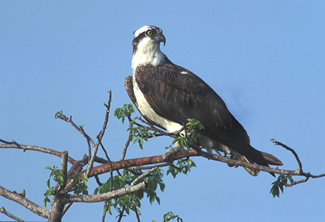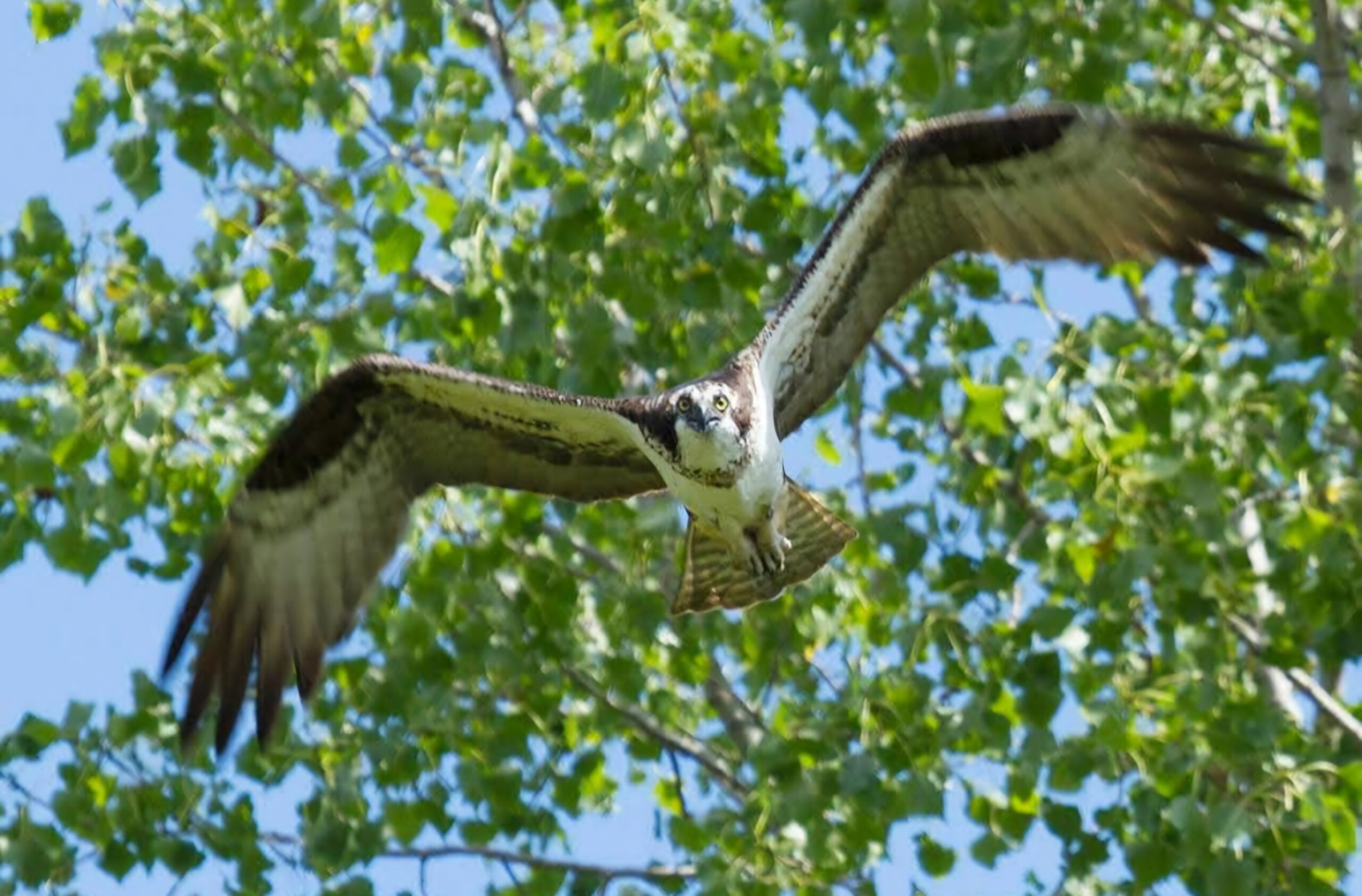Unique amongst other North American raptors due to their diet of almost exclusively live fish and their ability to dive into the water to catch them, osprey are a common sight to see near the wetlands of our preserve. Standing near the Nature Center building or walking along our wetland trails can offer a glimpse of osprey flying overhead carrying fish or sticks back to their nest platforms.

Osprey nest platforms can be found next to the Nature Center’s front parking lot and over the West Twin River – visible from Cattail Trail and the Observation Tower.
Interesting Facts:

- An osprey may travel more than 160,000 miles as it migrates during its 15 to 20 year lifetime.
- Osprey have unique foot adaptations to help them hold onto their slippery prey.
- They have a reversible outer toe that allows them to grasp with two toes in the front and two toes in the back in addition to having barbed pads on the soles of their feet… like velcro!
- When flying with prey, an osprey will face its catch head first for less wind resistance.
- Osprey are excellent anglers. Over several studies, osprey caught fish on at least 1 out of every 4 dives, with success rates sometimes as high as 70 percent.
- Osprey readily build their nests on man-made structures such as telephone poles, channel markers, duck blinds, and platforms specifically placed for them.
Sources: www.allaboutbirds.org and the Cornell Laboratory of Ornithology websites.

